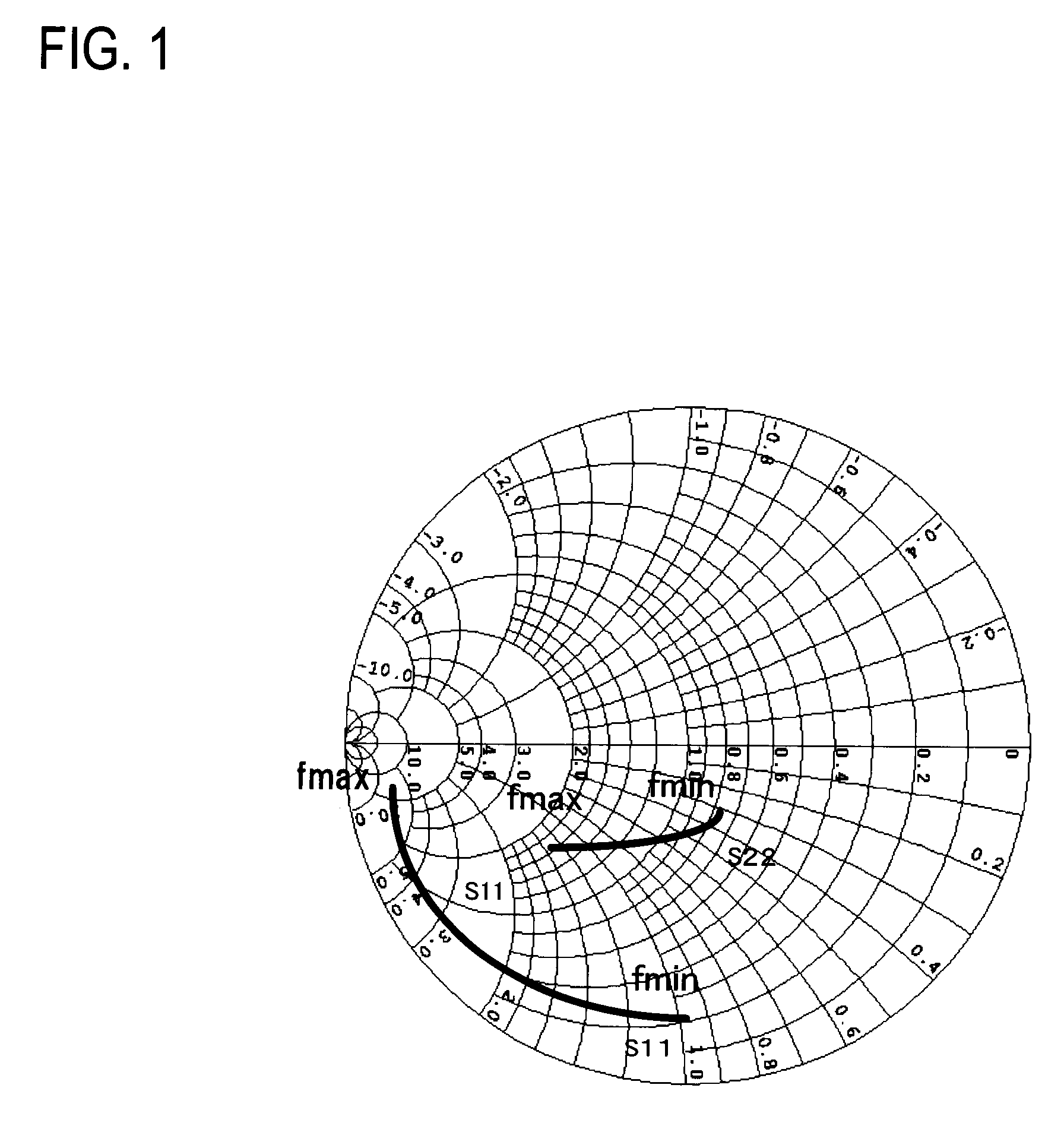Matching circuit and multi-band amplifier
a matching circuit and amplifier technology, applied in amplifier combinations, amplifier combinations, multiple-port networks, etc., can solve the problems of large circuit size, difficult optimal design of matching circuits for used frequency bands, and high-efficiency operation of power amplifiers, so as to achieve efficient operation and efficiently amplify signals
- Summary
- Abstract
- Description
- Claims
- Application Information
AI Technical Summary
Benefits of technology
Problems solved by technology
Method used
Image
Examples
first embodiment
[0051]FIG. 4 shows an embodiment of an output-side circuit of a multi-band amplifier. A matching circuit of the present invention is provided on the output side of an amplification device of the multi-band amplifier, so that a power amplifier can be designed with high efficiency and high performance. A multi-band amplifier 100 shown in FIG. 4 amplifies signals of two frequency bands f1 and f2. The multi-band amplifier 100 is made up of an amplification device 10 and a matching circuit 40. The matching circuit 40 is made up of a demultiplexer 20, a matching block 30, and a matching block 31.
[0052]The amplification device 10 is fed with a combined signal of the signal of the first frequency band f1 and the signal of the second frequency band f2. The amplification device 10 amplifies the inputted signal and outputs the amplified signal to the demultiplexer 20. The demultiplexer 20 demultiplexes the signal having been amplified by the amplification device 10 into the signal of the frequ...
second embodiment
[0096]In the first embodiment, the matching circuits and the multi-band amplifiers are disposed on the output side. A similar matching circuit may be used on the input side of a multi-band amplifier. By disposing the matching circuit of the present invention on the input side, an amplifier can be designed with high efficiency. In the following explanation, the same parts as those of the first embodiment are indicated by the same reference numerals and the explanation thereof is omitted.
[0097]FIG. 18 shows an example of a multi-band amplifier in which the matching circuit of the first embodiment is used on the input side of the multi-band amplifier. A multi-band amplifier 500 shown in FIG. 18 amplifies the signals of two frequency bands f1 and f2. The multi-band amplifier 500 is made up of an amplification device 10 and a matching circuit 501. The matching circuit 501 includes, for example, a multiplexer 60, a matching block 530, and a matching block 531.
[0098]Of the input signals of...
third embodiment
[0103]A multi-band amplifier of a third embodiment is obtained by combining the matching circuit and the amplification device of the first embodiment and the matching circuit of the second embodiment. For example, a multi-band amplifier 600 shown in FIG. 19 includes a matching circuit 501 described in the second embodiment, the amplification device 10 for amplifying a signal outputted from the matching circuit 501, and the matching circuit 40 for performing, for each frequency band, impedance matching on a signal outputted from the amplification device 10 in the first embodiment.
[0104]The configurations and functions of the parts are similar to those of the first and second embodiments. Thus the same parts are indicated by the same reference numerals and the explanation thereof is omitted. As in the first and second embodiments, the matching circuit 501 and the matching circuit 40 can be configured for multiple bands and may include the demultiplexer 20, the multiplexer 60, the isol...
PUM
 Login to View More
Login to View More Abstract
Description
Claims
Application Information
 Login to View More
Login to View More - R&D
- Intellectual Property
- Life Sciences
- Materials
- Tech Scout
- Unparalleled Data Quality
- Higher Quality Content
- 60% Fewer Hallucinations
Browse by: Latest US Patents, China's latest patents, Technical Efficacy Thesaurus, Application Domain, Technology Topic, Popular Technical Reports.
© 2025 PatSnap. All rights reserved.Legal|Privacy policy|Modern Slavery Act Transparency Statement|Sitemap|About US| Contact US: help@patsnap.com



